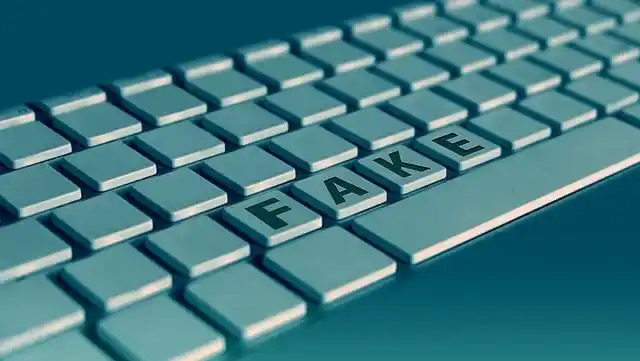Scams have a long and notorious history, dating back well before the beginning of our modern digital age. People and organizations affected by scams often face profound consequences, taking years to recover, with economic and emotional costs more serious than initially expected
Research by Ofcom confirms that aspect, revealing that over a third (34%) of scam victims experience immediate negative mental health impacts, rising to nearly two-thirds (63%) for those suffering financial losses.
While scams are a phenomenon, their evolution in the digital era, particularly within the cryptocurrency market, has created a new chapter in their complexity. This post will explore how big the scam industry is, the significant effects on victims, and the purpose of this new era of scam prevention.
Evolution of Scam Industry
A scam is an illicit activity targeted at procuring economic gains by exploiting people or organizations through unfair tactics. Unlike theft, which employs physical force, scams are based on the intentional sharing of false information to illegally obtain money.
Here, we will explore the history of scams, from ancient times to modern digital challenges, describing how big the scam industry is:
- Ancient Beginnings: The history of financial scams traces back to ancient times, starting with the earliest recorded case of insurance fraud in Greece in 300 BC. Another significant scam occurred in 193 AD, when the Praetorian Guard in Rome conspired to sell off the empire to the highest bidder.
These early examples highlight the basic elements of scamming: falsification and the sale of what one does not own.
- 19th and Early 20th Century Scams: The 19th and early 20th centuries saw the emergence of significant scams, such as Gregor MacGregor’s fraudulent fake land sales in 1821 and Eduardo de Valiferno’s infamous scheme involving the Mona Lisa in 1911.
This period also witnessed the advent of the Ponzi scheme, marking a major evolution in the methods employed by fraudsters.
- Mid-20th Century to Pre-Digital Age: The mid-20th century dealt with the frauds of Frank William Abagnale Jr., who assumed multiple identities to perpetrate check and identity fraud. This period also witnessed a surge in more complex fraud strategies, especially within the banking industry.
- Digital Age and Modern Scams: Since the late 1980s, technological advances have changed the fraud industry, bringing with them new forms of scams such as internet fraud, credit card fraud, and a significant rise in identity theft and phishing attacks.
The Rise of Cyber Fraud
The internet’s fastest expansion followed the exponential growth of cybercrime, leading to an era that is characterized by increasingly sophisticated fraudulent activities, propelled by technological innovations.
- E-commerce and the Beginning of Online Fraud: In the early ’90s, the dawn of e-commerce platforms marked a new era for fraud. This period saw fraudsters exploiting the vulnerabilities of online credit card transactions.
Credit card verification technologies were in their early stages, allowing criminals to fraudulently use celebrities’ credit card details to make extravagant purchases.
- Data Breaches and Identity Theft: The early 2000s witnessed a shift towards data breaches as a dominant method of fraud. These breaches allowed scammers to pretend to be people or gain access to their accounts, leading to a surge in identity theft and account takeovers.
Today’s Scam Industry
As financial institutions and technologies have advanced, we’ve moved into an era where payments can be easily completed with a simple tap on our smartphones, avoiding the need to visit banks.
This comfort, however, has come with its challenges. In 2023, the Federal Trade Commission reported over 5.39 million fraud cases, representing a rise from the previous year, where 2.6 million were fraud-related complaints, and 1 million were identity theft complaints, highlighting the battle to fight cyber fraud in our digitalized world.
Cryptocurrency Fraud
From 2017 to the present, the rising popularity of cryptocurrency exchanges has introduced new opportunities for illicit activities, complicating regulatory efforts and attracting scammers to lucrative digital assets like Bitcoin and NFTs. These groups use phishing tactics to take control of victims’ crypto accounts and wallets, leading to serious financial losses.
Also, NFT scams have emerged as a significant concern in the crypto and blockchain community, with Decentralized Finance (DeFi) platforms raising light on vulnerabilities.
The manipulation of anonymity and volatility in crypto transactions by scammers has led to elaborate scams, resulting in a $1.7 billion loss to crypto fraud in 2023, as reported by The Chainalysis Crypto Crime Report. This reveals the complex race between cybersecurity efforts and the tactics of scammers to create the biggest crypto scams year after year.
Impact of Scam Industry
The consequences of scams go far beyond financial losses, turning into other criminal acts and contributing to social and psychological problems, damaging public services, and amplifying social challenges. This speaks to the scale of the scam industry’s impact.
Human Impact
The human cost of a scam is severe and often irreversible. Victims, along with their families and communities, suffer financial loss and severe mental and physical trauma.
Particularly vulnerable are those dependent on government services—such as the elderly and the sick—who face severe disadvantage and inequality as a result of scams. This trauma interferes with people’s well-being and leads to missed opportunities, perpetuating the cycle of vulnerability of victims.
Government Impact
Scams impact the government’s capacity to offer efficient services, taking away resources intended for the people who need them. This act can lead to inadequate or unsafe services and, in worst-case scenarios, the failure of entire programs.
The resulting loss of public trust and confidence in both governmental and business institutions is particularly severe when scams are linked to corruption cases.
Reputational Impact
On a bigger scale, the reputational damage inflicted by a scam can lead to a loss of international and economic standing, altering an entity’s global reputation and credibility.
Industry and Business Impact
Illegal operators gain an unfair advantage and take away legitimate businesses, which leads to altered market dynamics: deteriorating the operational efficiency of businesses and increasing the pressure on community services that support fraud victims.
Security Impact
National security and international relations are negatively affected by potentially redirecting resources toward organized crime and terrorism. It also amplifies criminal activities and weakens the pillars of global cooperation and support.
Financial Impact
It leads to big financial losses for governments and businesses of all types, thanks to many scams remaining undetected due to the challenges in identifying them. By measuring the impact of a scam, it is possible to reduce potential financial losses and set up strategies for prevention.
Modern Scam Prevention
Since the rise of the finance market evolution, the fight against scams has continually grown, with preventative measures becoming more advanced over time. Back then, simple strategies were used to prevent scams, but as scammers have become more ingenious, the tactics to stop them have progressed.
Today, scam prevention integrates advanced technologies such as machine learning and real-time monitoring to detect and mitigate potential threats. These modern systems analyze vast datasets to spot inconsistencies and predict fraudulent activity before it occurs, employing techniques such as:
- Data visualization
- Two-factor authentication
- Comprehensive customer database management to secure users against scams
Why Is It Important to Report Scams?
To promote scam prevention, the role of the community cannot be ignored. Reporting scams and sharing personal experiences play a critical role in the collective fight against scams.
The Federal Trade Commission (FTC) and initiatives like the Cryptoscam Defense Network (CDN) are at the forefront of this battle, using information provided by real people to build cases and shut down operations that prey on unsuspecting victims.
- The Federal Trade Commission’s (FTC) gain strength from people’s contributions, which share insights on new scammer tactics to improve the efficacy of preventive measures.
- The Cryptoscam Defense Network highlights the importance of collective vigilance and education, providing a platform for victims to share experiences or report scammers’ details, such as names or numbers.
We give you resources like checklists, directories for reporting authorities, and educational materials, to prepare you with the best tools to protect yourself and others from crypto scam attacks.
As scams grow more frequent and more complex, the use of advanced prevention technologies coupled with active community participation becomes increasingly vital. Having informed and proactive participation, we can improve our collective fight against the changing scam industry.
Conclusion
The rapid expansion of the scam industry can be noted in the diverse impacts both people and organizations receive. Beyond the financial loss, it leads to serious emotional and psychological pain, which shows how big the scam industry is.
At Cryptoscam Defense Network, our mission is to provide a community of support for those affected by scams. By offering reliable information, support, and secure connections, the Network plays a key role in educating and empowering people to protect themselves and others from the dangers of fraud.
We Want to Hear From You!
The fight against cryptocurrency scams is a community effort at Crypto Scam Defense Network, and your insights are invaluable. Have you encountered a scam, or do you have questions about navigating the complex world of digital currency? Maybe you have suggestions or want to share your story to help others. Whatever your experience, we’re here to listen and support you.
Reach out to us at hello@cryptoscamdefensenetwork.com. Share your stories, ask questions, or make comments. Your voice is crucial in building a resilient and informed community. Together, we can improve our defenses and promote a safer digital space for all.
Be a part of the change. Your story matters.
Photos via Pexels.







